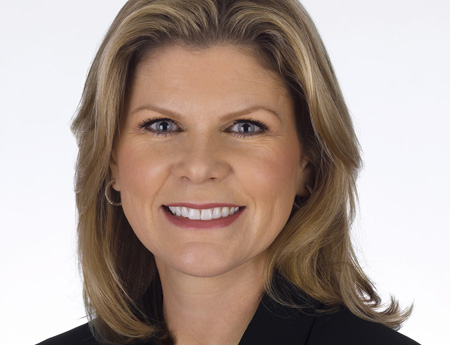Viacom’s Data Whisperer Divines Consumer Trends

When Colleen Fahey Rush speaks on Sept. 11 at B&C and Multichannel News’ Next TV Summit San Francisco, Viacom Media Networks’ executive VP and chief research officer will be revealing recent research the company conducted on the myriad paths viewers take to find and view content.
“How you become aware of a show, where you go to watch it…and some of the hurdles you might face to watch it…are so much more complex than they were even a few years ago,” she says. “As programmers we have to stay on top of those trends.”
TV has been a research-intensive medium since the 1960s, but rapidly changing technologies and consumer habits have made researchers like Fahey Rush more important than ever.
“Colleen’s research efforts have been instrumental in all aspects of our the business,” says Rich Eigendorff, chief operating officer, Viacom Media Networks, who particularly highlights her industry-wide efforts to improve cross-platform measurement. “People are watching more TV than ever, but without a way for advertisers to compare results, there is no way to measure the effectiveness of these creative advertising solutions.”
Ratcheting Up Research
Fahey Rush’s own path into the world of data and research insights began, she admits, “a bit by accident.” While getting an undergraduate degree at Cornell, she worked as an intern for CBS in the research department. “It was my first exposure to understanding how the whole business works off of Nielsen ratings and I was hooked,” she recalls.
After college, she moved to New York to take a job in research with the CBS O&Os in 1986 at a time when the growing importance of syndication and cable was changing the research.
In 1993, she took the top research job at Spanish-language broadcaster Telemundo. “I was interested in doing something new and it was an amazing opportunity to learn about a thriving market and to educate agencies and advertisers on how big and important the Hispanic market was,” she says.
After a brief stint on the agency side, she joined VH1 as the head of research in 1996, beginning what is now an 18-year stint at Viacom. “Viacom’s calling card has always been knowing our audiences intimately and research really has a seat at the table here,” Fahey Rush says. “Research is part of the strategy teams that help drive the businesses” and they work closely with management “so we can field the right research to help solve business problems.”
As Fahey Rush assumed a wider role at the company, rising to the top research job in 2011, her efforts and expertise spread far beyond traditional Nielsen ratings into measurement and consumer insight research for all the new channels and digital platforms the company was adding to its portfolio.
The breadth of that research has included the recent “TV Here, There (Not Quite) Everywhere” study on TV Everywhere and “The Next Normal” study of millennials as well as upcoming studies on VOD, Amazon Prime and a look at the effectiveness of TV advertising that will draw on new research tools from neuroscience.
Disruptive Data
Pushing beyond the limits of that research has also found Fahey Rush working actively with industry-wide groups outside of Viacom. Frustrated by the lack of progress in measuring viewing on multiple devices, in 2009 she was part of a group of researchers and executives that founded the Coalition of Innovative Media Measurement (CIMM), where she currently serves as executive chairman of the board. “We all felt that progress in measurement had come to a grinding halt and we needed to come together to help each other try to figure it out,” she says.
CIMM has since spearheaded landmark cross-platform studies, including the second phase of Project Blueprint, which offers combined viewing for TV, radio, desktop, mobile and tablets. And, industry pressure has helped push research companies to launch new measurement products this year, with Nielsen planning to add smartphone and tablet viewing to its ratings this fall.
Outside the office, Fahey Rush is so focused on her family and her two daughters that she admits she doesn’t have a lot of hobbies. Each Sunday, she makes sure her husband and daughters—“ budding programmers” she quips who are always giving her advice on MTV and Nickelodeon— are together for the dinner she cooks. “We try to keep that spot sacred,” she says.
Equally sacrosanct is her insistence on exploring new challenges and adapting the company’s research culture to the new world of Big Data, which requires advanced mathematics and methodologies for analyzing the mountains of numbers produced by digital media.
“The skills you need are definitely evolving,” she says. “But you still need people in senior positions that can weave it all together and make sense of it. You need your data analytic jockeys and you need your storytellers.”
Broadcasting & Cable Newsletter
The smarter way to stay on top of broadcasting and cable industry. Sign up below
